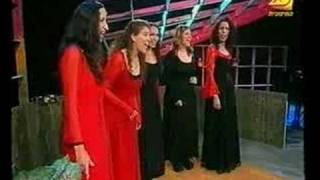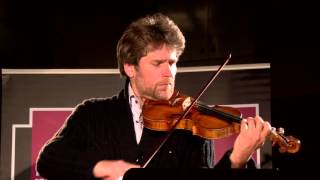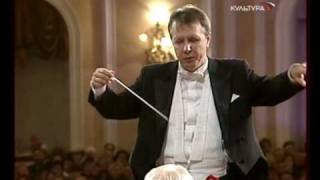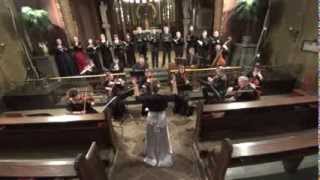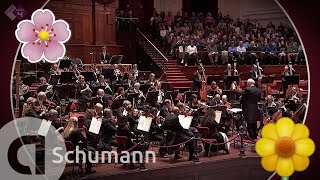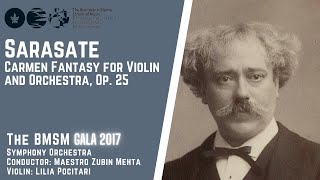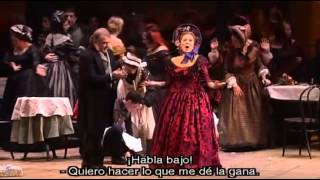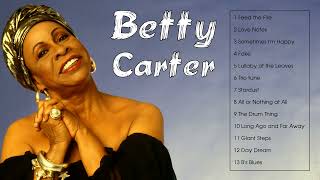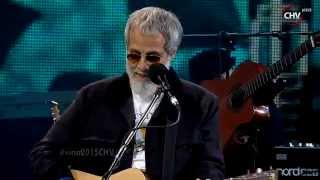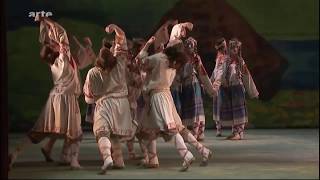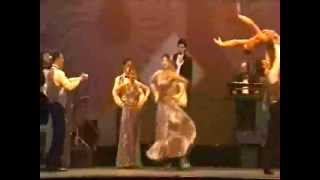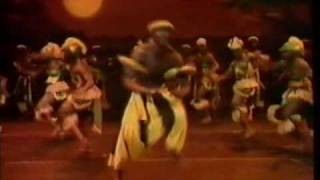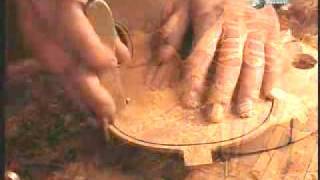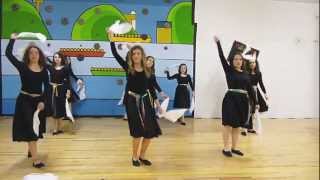On March 20 at 10:24 p.m., Spanish time, Spring begins
Recommended music videos for initiation to classical music
Antonio Vivaldi (1678-1741) was an Italian priest, violinist and composer known as the red priest (“il prete rosso”). He was born in Venice and as a child he learned to play the violin with his father; At the age of 15 he entered the Seminary and once ordained a priest, he could barely attend to his religious obligations due to his health problems; So he was appointed violin teacher in an orphanage where he taught theory and instrument classes. At the age of 40 he was appointed Chapel Master in Mantua where he wrote his famous Four Seasons , his best-known work. Throughout his life he composed almost 800 works, of which half were concerts, 40 operas, 60 religious works and numerous sonatas.
The Four Seasons is a group of four concertos for violin and orchestra published with poems describing each concert. Today we offer an original version of the first of them, Primavera , performed by the female vocal quintet Carmel A-Cappella .
George Onslow (1784 – 1853) was a French composer, nicknamed the French Beethoven . He lived most of his life in France , being the son of Eduard , an Englishman, and Marie-Rosalie de Bourdeilles , a Frenchman. He first studied piano with Hullmandel in London , and then with Johann-Ladislav Dussek in Hamburg; years later, with Johann-Baptist Cramer and Anton Reicha , with whom he would also study composition. In 1808 he would marry Charlotte-Françoise-Delphine and in 1825 he would meet Félix Mendelssohn in Paris . After the death of his father, Onslow must abandon Chalendrat Castle so he would build another castle, Bellerive Castle , where he lived until his death. He wrote various chamber music, 4 symphonies and three operas.
Dmitri Shostakovich (1906-1975) is one of the most recognized composers of the 20th century , who had to adapt to the political status with which he had to live. His music was sometimes denounced as decadent and reactionary and other times praised as representative of the new socialist art by the CPSU . In public, he was always loyal to the system and held important responsibilities in artistic institutions, accepting membership in the CPSU in 1960 and becoming a member of the Supreme Soviet . He wrote fifteen string quartets, another fifteen symphonies, six concertos, several operas, as well as film and ballet music. His music stands out for its relevant contrasts and original rhythmic aspects underpinned by an energetic, sometimes burlesque, character.
The Bolt (“The Screw”), op. 27, is a ballet score written by Dmitri Shostakovich between 1930 and 1931 with a libretto by Victor Smirnov . The humorous and satirical ballet in three acts and seven scenes was choreographed by Fyodor Lopukhov and premiered on April 8, 1931 at the Leningrad State Academic Opera and Ballet Theater . It was not performed again until 2005, when a two-act choreography by Alexei Ratmansky was performed at the Bolshoi Theater in Moscow . The ballet is an ironic story about careless work in a Soviet factory. The lazy Lyonka hates work and, together with a local priest and an anti-Soviet conspirator, plans to sabotage the machinery by putting a lock on it. His plan is thwarted by a group of young communists.
Gerard McBurney extracted a suite from the ballet, of which we offer a part in the Russian National Orchestra version conducted by maestro Mikhail Pletnev .
Paul de Senneville (Paris, 1933-2023)1 was a French producer and composer, founder of Delphine Software (named after his first daughter). He worked with French artists such as Mireille Mathieu, Michel Polnareff, Dalida or Claude François and especially Richard Clayderman , for whom he composed the work that launched him to stardom: Ballad for Adelina (the name of Paul 's second daughter), which was a global success. Since then, playing Paul 's music, Richard Clayderman has become the French artist with the highest sales record in the world. In fact, 100 million records have been sold in 57 different countries, earning 290 gold records and 90 platinum records. He died on June 23, 2023 at age 89. The cause of his death is unknown.
Ballade pour Adeline is a 1977 instrumental piece performed by Richard Clayderman and composed by Paul de Senneville and Olivier Toussaint . Paul de Senneville composed the piece as a tribute to his newborn daughter, Adeline . As a single it sold around 22 million copies in more than 30 countries.
Richard Clayderman (Paris, 1953), is a French pianist specialized in light music and one of the most successful worldwide, with more than 70 million records sold, being awarded 267 gold records and 70 platinum records, and having performed more than 600 concerts around the world. He is known for his performance of the Ballade pour Adeline .
Recommended classical music videos
Heinrich Ignaz von Biber (1644 –1704) was an Austro-Bohemian composer and violinist born in Wartenberg (now Stráž pod Ralskem, Czech Republic). After working for various princes and bishops, in 1670 he settled in Salzburg for the rest of his life, enjoying considerable success and corresponding economic and social benefits. He was known as a violin virtuoso and his current fame is due mainly to his works for this instrument, many of which use scordatura (different tuning of the strings). Biber wrote abundant chamber music, choral music, concertos, operas, and a number of more popular pieces. He is most recently credited with the Missa Salisburgensis , a sweeping mass for 53 independent voices.
The Requiem or Mass for the deceased is a cantata referring to the liturgical celebration carried out just before the burial of one or more people or in the ceremonies of remembrance or commemoration of their death. Its name comes from the first words of the Introit (first movement of the cantata): Requiem æternam dona eis, Domine, et lux perpetua luceat eis ("Grant them eternal rest, Lord, and may perpetual light shine upon them"). Today it is offered to us by the Regnis Liberec Ensemble conducted by Kristýna Stoklasová .
Robert Schumann (1810-1856) was a German composer, one of the pillars of Romanticism . He studied piano, although due to an incurable injury to his right hand, he left his piano career to focus on composition. He married Clara Wieck (“Clara Schumann”), daughter of his teacher, composer and prodigious pianist; Both maintained a close friendship with Brahms . From the age of 23 he suffered several depressive episodes and hallucinations with a suicide attempt in 1854. Until the age of 30 he only wrote works for piano and lieder (songs); But encouraged by his wife, he dared to write heavier works and thus wrote several choral works, chamber works, and orchestral works, among which his four symphonies, a dramatic poem, Manfred , and an opera stand out.
Symphony No. 1, “Spring” , had its premiere under the direction of Felix Mendelssohn on March 31, 1841 in Leipzig . Before composing this symphony, Schumann was widely known for his works for piano and voice. Clara motivated him to write symphonic music. The title "Spring" was given, according to Clara 's diary, for Adolph Boettger 's Spring Poems; However, Schumann himself expressed that the symphony is merely inspired by Liebesfrühling (Spring of Love), a collection of 12 lieder written by the Schumann couple .
The S infonía is structured in four movements: I (0´06´´) ANDANTE UN POCO MAESTOSO – (2´06´´) ALLEGRO MOLTO VIVACE .-. II (9´23´´) LARGHETTO .-. III (16'07'') SCHERZO: MOLTO VIVACE .-. IV (21´42´´) ALLEGRO ANIMATO E GRAZIOSO. Its realization is offered to us by the Philharmonie Südwestfalen conducted by the Dutch maestro Gerard Oskamp .
Georges Bizet (1838-1875) was a French pianist and composer who did not have many successes during his lifetime. Bizet won several awards throughout his brilliant career as a student at the Paris Conservatoire , including the prestigious Prix de Rome in 1857. He was recognized as an exceptional pianist, although he preferred not to take advantage of his skill and rarely played in public. His best-known opera, Carmen , achieved sensational success at its premiere that he did not enjoy as he died three months later of a heart attack at the age of 39. The rest of his works were cornered and rescued little by little in the 20th century. Despite this, he is currently considered a reference of the 19th century and a brilliant and imaginative composer.
Pablo Sarasate (1844-1908) was a composer and violin virtuoso born in Iruña/Pamplona . Precocious child whose parents, aware of their son's musical aptitudes, trained him in the study of the violin; studies that he expanded in Madrid and Paris . In 1859 he began his public career giving concerts throughout Europe and America, remaining active until his death. Its universal prestige was evident with the dedication with which eminent composers such as Max Bruch , Camille Saint-Saëns , Édouard Lalo, Henryk Wieniawski , Antonín Dvořák ... and some others headed some of their scores. He died at his home in "Villa Navarra" in Biarriz in 1908, at the age of 64.
La Fantasía Carmen , Op. 25, by Pablo Sarasate , is a fantasy for violin and orchestra, on themes taken from the opera Carmen by Georges Bizet . The piece contains an adaptation of the Aragonesa, the Habanera, an Interlude, the Seguidilla and the Gypsy Dance. Today we have as main artists Lilia Pocitari as violin soloist and Zubin Mehta as conductor.
Giacomo Puccini (1858-1924) was an Italian opera composer, considered among the greatest, of the late 19th and early 20th centuries. He was a visionary, creator of the music concepts that would govern cinema during the 20th century ; For him, the use of modal passages or polytonal devices and tonality or atonality were matters of effect that were defined by the dramatic needs of the work. For example, in Tosca , the way in which he replaces the text with musical passages anticipates the action that is about to happen. In addition to twelve operas, Puccini wrote other notable works, such as a Glory Mass, a Hymn to Rome , a symphonic caprice, two symphonic preludes, and three minuets for string quartet. He is considered the successor of Giuseppe Verdi .
La Bohème (The Bohemia) is an opera in four acts with music by Giacomo Puccini and a libretto in Italian by Giuseppe Giacosa and Luigi Illica , who simplified and combined the different episodes of the serial novel Scenes of Bohemian Life , by Henri Murger , published over five years (1845-1849) in the newspaper El Corsario . It reflects the composer's experiences during the years he lived as a student at the Milan Conservatory , where he shared a room with Pietro Mascagni .
The premiere of La Bohème took place at the Teatro Regio in Turin on February 1, 1896, directed by Arturo Toscanini . The work had a cold reception, both from the public and from critics; but for many years, La Bohème has been one of the most prominent operas in the standard operatic repertoire and appears, in recent statistics (2005-2010), as the fourth most performed in the world. In 1946, fifty years after its premiere, Toscanini himself again conducted a performance, this time with the NBC Symphony Orchestra , a version that was later published on disc and compact disc and is the only recording of a Puccini opera made by its original conductor.
For the visualization of this opera we have had Marcelo Álvarez (Rodolfo), Natale de Carolis (Schaunard), Matteo Peirone (Benoit), Cristina Gallardo Domas (Mimí), Roberto Servile (Marcello), Giovanni Battista Parodi (Colline), Angelo Romero (Alcindoro), Hey-Kyung Hong (Musetta), Alberto Fraschina (Perpignol), Ernesto Panariello (Sergente dei doganieri), Tito Nava (Un doganiere), Antonio Novello (Un venditore), Coro di Voci Bianche del Teatro alla Scala e from the Conservatory “G. Verdi” di Milano , Alfonso Caiani (Chorus Master), Orchestra and Choir of the Teatro alla Scala , Bruno Casoni (Choir Master). Conducted by all of them by Bruno Bartoletti.
Recommended music videos for all tastes
Betty Carter (1929 – 1998) was an American jazz singer. She is probably the most innovative vocalist in the history of jazz , almost permanently linked to the jazz avant-garde and with a constant tendency to improvise and transgress the harmonic and melodic limits of the songs. Even as a young man, Carter brought a new vocal style to jazz . The breathiness of his voice was a feature that was rarely heard before his appearance on the music scene. She was also known for her passion for scat singing (a type of vocal improvisation, usually with meaningless words and syllables). In 1997 she was awarded the National Medal of Arts by President Bill Clinton ; This award was one of thousands, but Carter considered this medal the most important he received in his life.
Cat Stevens (London, 1948) is a British singer-songwriter, composer and multi-instrumentalist. Their 1967 debut album entered the Top 10 in the United Kingdom , and the song " Matthew and Son " managed to reach second position on the UK Singles Chart . Their studio albums Tea for the Tillerman (1970) and Teaser and the Firecat (1971) were certified triple platinum by the RIAA in the United States . Throughout his career he has recorded albums in a wide variety of genres such as folk, rock, pop and Islamic music , becoming a global reference for each of them. In 2007 he received the Ivor Novello Award for his "extraordinary collection of songs" and in 2014 he was inducted into the Rock and Roll Hall of Fame.
Lola Índigo (Miriam Doblas Muñoz, Madrid, April 1, 1992) is a Spanish singer and dancer. She began at a very young age in the artistic world, highlighting her role as a dancer and choreographer, participating in several musicals in China and Los Angeles . With its first single, " Ya no Quiero Ná " it achieved double platinum certification in December 2018, surpassing nine million views on Spotify and entering the list of the fifty most viral songs in the world; The video clip accumulates more than seventy million views on YouTube . Later, after the success of her latest album, the singer, together with Prime Video , released the documentary: Lola Índigo. The girl , on May 13, 2022 The documentary reviews the singer's career and success.
Khaled (Oran, Algeria, 1960), formerly Cheb Khaled (Cheb means young man in Arabic) is an Algerian singer of raï (Algerian musical genre). Since he was little he expressed his admiration for the Egyptian music of Ulm Kalthum or the reggae of Bob Marley . He learns singing, accordion and playing a homemade guitar (which at that time children made from a can of car oil and bicycle brake cables) and makes his debut according to tradition by playing at circumcision parties and weddings. At fourteen years old, he taught himself to play the real guitar, bass, accordion and harmonica. At the age of 16 (1976) he left school and recorded his first album: Trigue Lissi (The Road to the Institute), where he advocates playing hooky.
Cheb Khaled becomes a star in Algeria without ever having been on the radio, television programs, or any music conservatory. Their raï songs dealt with women and alcohol, due to which their radio broadcasting was prohibited. In the following years, Cheb Khaled made a living performing at weddings and cabarets. At the beginning of the eighties he met the producer Rachid Baba Ahmed who introduced him to the electronic sounds of Western music and in 1989 he settled in France from where he would release various recordings with which he approached jazz and pop and sometimes, to rock, funk and Egyptian music
Recommended peculiar videos
Igor Stravinsky (1882-1971) was a Russian pianist, conductor and composer; For many critics, the most important of the 20th century . In his long life he composed a large number of works addressing various styles such as primitivism , neoclassicism, serialism or jazz . Eventually, Stravinsky 's musical future was guided by Sergei Diaghilev , director of the Ballets Russes in Paris , who hired Stravinsky to write a ballet for his company, which would be The Firebird ; Stravinsky left Russia for the first time in 1910, to attend its premiere in Paris by the Ballets Russes .
During his stay in Paris , he composed two more works for the Ballets Russes : Petrushka (1911) and The Rite of Spring (1913). He also wrote for various types of ensembles and genres from operas and symphonies to small pieces for piano and works for jazz groups, achieving great fame not only as a composer, but also as a pianist and conductor. According to Time magazine, he was one of the most influential personalities of the 20th century .
Le Sacre du printemps (The Rite of Spring) is a ballet by Stravinsky written for the 1913 Paris season of the Ballets Russes company; the original choreography was by Vaslav Nijinsky , with scenery and costumes by Nicholas Roerich . Its premiere at the Champs-Elysées Theater caused a sensation and disturbances in the audience due to the avant-garde nature of the music and choreography. The concept that Roerich develops from Stravinsky 's idea is suggested by its subtitle, " Images of pagan Russia in two parts ." The work describes the story, which took place in ancient Russia , of the pagan abduction and sacrifice of a maiden at the beginning of spring, who had to dance until her death. Today it is offered to us by the Ballet and Orchestra of the Mariinsky Theater under the baton of maestro Valery Gergiev .
Franz Lehár (Komárno, Austro-Hungarian Empire, now Slovakia, 1870 - 1948) was an Austro-Hungarian composer, mainly known for his operettas. Although Lehár was Hungarian, he composed most of his works in Austria . Avant-garde composer, father of German Impressionism, he achieved fame thanks to the now consecrated work The Merry Widow , a humorous operetta divided into three acts that was liked by both the public and critics alike, awakening the curiosity of an older Richard Wagner , who asserted that "if there was any future in German music, it lay without a doubt in the hands of the young Franz ."
Die lustige Witwe (La Veuve Joyeuse, The Merry Widow) is an operetta in three acts with music by Franz Lehár and a German libretto by Victor Léon and Leo Stein based on the comedy L'attaché d'ambassade (1861) by Henri Meilhac . Its plot revolves around a rich widow from a small principality and her countrymen's attempt to prevent her assets from leaving the country by finding her a good husband. It was premiered in Vienna on December 30, 1905 and since then it has been considered one of the most important works of the genre.
Today we offer the waltz belonging to said operetta C'est la Valse ecoutez in the voice of the Spanish tenor José Villamor accompanied with the appropriate choreography.
The expression African Dance refers to numerous types of African dances that occur in the portion of Africa south of the Sahara ; dances closely related to musical traditions, the concept of polyrhythm and total articulation of the body; dances that interpret social patterns and values that help people to work, mature, pray and criticize members of the community while contributing to the celebration of festivals and funerals and an approach to the gods, promoting, in general, the participation of spectators in the same artistic expression. Traditional dance in Africa is an element that expresses the life of the community more than that of individuals or couples.
The violin (from the Italian violino, diminutive of viola) is an instrument of the bowed string family; It is the smallest and sharpest of its kind and consists of an 8-shaped soundboard, a fretless neck and four strings that are plucked with a bow. In addition to the effect achieved by the bow on the strings, other effects can be achieved: pizzicato (plucking the strings), tremolo (moving the bow up and down very quickly), vibrato (slightly oscillating the fingers on the strings), glissando (gliding fingers from one position to another), col legno (playing with the wooden part of the bow), sul ponticello (playing near the bridge), sul tasto (playing on the fingerboard), etc. Violin sheet music uses the treble clef, formerly called the "violin clef."
Recommended music videos for children
Various Wikipedia articles have been used to write these texts.
The texts of Videomusicalis are written in Basque, Spanish and English.





